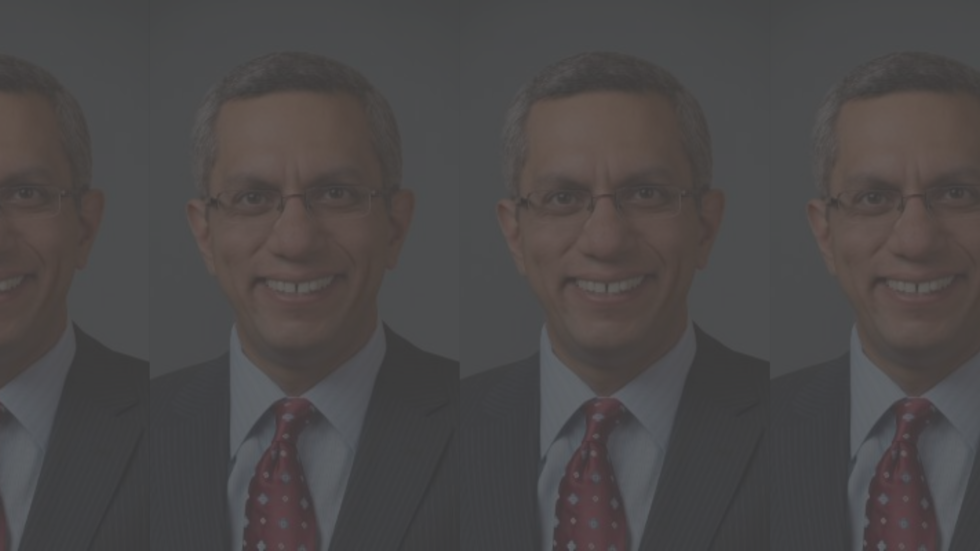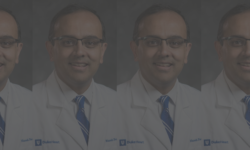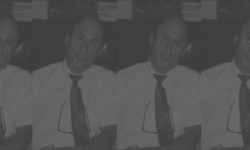
One day, Cardiac Electrophysiologist Al Ahmad was preparing to perform a routine procedure on another doctor. He told his patient that it was just a straightforward, one-hour routine procedure, but the patient replied by reminding Al-Ahmad that a one-hour procedure for a doctor could be the most important hour of his life.
Al-Ahmad was significantly impacted by the doctor’s words, which drastically changed how he viewed his career. It was at this point that he realized his role as a cardiologist: he had been entrusted with the lives of hundreds of people, and he felt the importance of acknowledging the weight of that responsibility and to not take his job lightly.
“For us, it’s routine … but you also have to realize that one procedure that I do routinely may have a huge impact on somebody,” Al-Ahmad said. “It may save their life, it may impact them, it may make them feel better, it may not. Everything we do kind of matters to some extent — even the small stuff matters.”
Undergraduate and medical school career
When Amin Al-Ahmad was young, he was inspired by his father — a pediatrician who always seemed like the “wise person in the room” among the people he interacted with — to pursue medicine.
“People say, ‘I want to help people,’ and it’s a little bit cliche, but I enjoy that aspect of medicine a lot,” Al-Ahmad added. “We actually do something, impact somebody in a positive way that helps them. So that part I really like — that’s still what drives me.”
Al-Ahmad grew up in the Middle East, and when he enrolled in his undergraduate program at Syracuse University, he decided to complete his degree in bioengineering, a field that wasn’t heavy on reading or English.
Because of Al-Ahmad’s engineering track, he had to take extra classes in addition to the typical pre-med classes, which made his undergraduate experience a little more difficult. The engineering curriculum was also less flexible, preventing him from taking a broader range of elective courses.
“The main challenge with pre-med is that it’s a lot of uncertainty, and you don’t feel settled because it almost feels like everything is hinging on your grades and getting into medical school,” Al-Ahmad. “So I would say it’s a lot of emotional rollercoaster and stress during that time.”
After graduating from Syracuse, he pursued his medical school education at Tufts University School of Medicine in Boston, Massachusetts. He compared his experience to “drinking out of a fire hose,” in the sense that there was an enormous amount of information he was required to digest over a relatively short period of time.
The first two years of medical school consisted of reading seminars and small groups, an experience Al-Ahmad noted did not truly prepare him for working in a hospital setting. However, during his third and fourth year clerkships, where students undergo one-on-one patient interactions and apply their learning of clinical sciences, he learned the real-world applications of medicine.
“Everything you learned, some of it matters, but then you realize that there’s a lot of other stuff that you don’t learn in books that you have to master and learn as a medical student,” Al-Ahmad noted.
Al-Ahmad completed his residency at Tufts-New England Medical Center in internal medicine, noting that there was a greater degree of flexibility compared to medical school — aside from fulfilling the required rotations in his specialty, he had more freedom to explore his other medical interests. He also expressed that it became one of the best parts of his life, because he felt like family with his co-residents.
Pediatrics to cardiology
Because his father was a pediatrician, Al-Ahmad was first compelled to follow in his father’s footsteps; however, in medical school, his interests eventually changed.
“When you actually start medical school, things change, and you realize that you’re not as interested in that as you thought you were,” Al-Ahmad said. “The job description is not really what I want to do.”
Feeling like he was a part of a group where he fit into a given field played a role in what he eventually chose to specialize in. Specifically, he found it helpful when he had a role model that he could look up to and emulate.
“It’s a little bit like Harry Potter when the hat finds the wizard, where your specialty finds you, you find your specialty, so your personality fits, everything kind of fits,” Al-Ahmad said.
After finishing his General Cardiology and Cardiac Electrophysiology fellowship at Tufts-New England Medical Center, he served as an instructor at Tufts University School of Medicine before spending ten years teaching at Stanford University School of Medicine in California.
“I spent 10 years in academic medicine, and I’m really proud of that period of time,” Al-Ahmad said. “Because during that period of time, I trained 20 other people to do what I do, and those people still call me and still consider me the person that trained them, and they view me with some level of respect. [I’ve] almost created a little family, and I’m really proud of that.”
As a cardiac electrophysiologist, Al-Ahmad specializes in heart rhythm abnormalities. He noted that he particularly enjoys working with his coworkers and forming connections with patients.
“I love getting notes from patients saying, ‘Thank you for helping me change my life,’” Al-Ahmad said. “That matters to me a lot. For more than 20 years, I have kept every single note — they’re all in a box,” Al-Ahmed said.
Al-Ahmad said that he is fortunate to have had the opportunity to try different technologies and be at the forefront of many cutting-edge medical discoveries, including cardiovascular implantable electronic devices, three-dimensional echocardiography, and robotic navigation systems. Most of his research is related to utilizing new technologies and devices to learn more about patient care.
Additionally, Al-Ahmad is involved in writing and editing textbooks and has published a number of works, including “Hands-on Ablation: An Expert’s Approach” and “How-to Manual for Pacemaker and ICD Devices: Procedures and Programming.” According to Al-Ahmad, most of his works start out as his own idea, but he has other co-editors who edit and contribute to some of the chapters.
Part of Al-Ahmad’s impact lies in the fact that people from different parts of the world have told him that his textbooks have benefitted their practice.
“I feel that’s almost a legacy thing, where I feel like I can help and extend knowledge to others,” Al-Ahmad added. “And hope that someday people remember it.”
Currently, Al-Ahmad works at Texas Cardiac Arrhythmia in Austin, Texas, a private practice that specializes in cardiac electrophysiology as the biggest rhythm specialty group in the country. His future goals are to continue making an impact on medicine and science by learning new procedures and publishing another edition of his textbook, a process he greatly enjoyed experiencing.
Al-Ahmad noted that there is a “secret promise” made between a doctor and a patient — that a routine visit for a physician could mean the most important hour of a person’s life, and that doctors have a responsibility to take that promise very seriously.
“People share with you things they don’t share with anybody, including their spouse,” Al-Ahmad said. “You’re given a privilege that most people will never have or see. So take that seriously and be mindful that it’s a privilege to some extent.”





